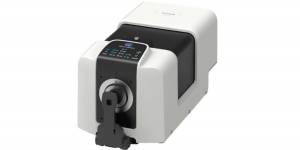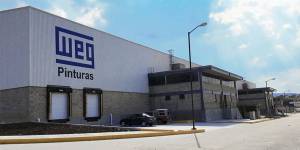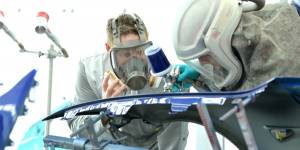 This class of paints must have different technical characteristics in terms of durability and safety. We present the latest technological advances in the formulation process and their main characteristics.
This class of paints must have different technical characteristics in terms of durability and safety. We present the latest technological advances in the formulation process and their main characteristics.
by Luis Ernesto Cañas Ramírez*
Paintings for demarcation of pavements, also called traffic paintings, have become a fundamental input for the execution of road and civil works projects in Colombia and Latin America. These paintings are relatively new, to the point that there is little technical literature available to account for this type of product.
The need to generate inputs for the demarcation of pavement that comply with road standards1, that conform to environmental protection standards, and that simultaneously allow to take care of the health of the personnel that produces them and applies the harmful effects of the use of solvents, are technical antecedents that contribute to explain the importance of their emergence in the chemical industry.
However, the high technical requirements in the manufacture and application of these paints have a purpose that stands out for its importance: the close relationship that they have with the normative definition of technical conditions of traffic safety that seek to guarantee the safety of citizens who travel on the roads. Its role in facilitating human mobility in its various forms requires special treatment.
Production and application
The production process of paints for pavement demarcation requires having
high quality inputs, for example: 100% acrylic emulsions, pigments and high purity pavers, among others. In relation to solvent-based paint, this paint has the particularity of being easily diluble in water, which implies that the equipment used for its application can be washed using this same element.
Water-based pavement demarcation paints contain a high percentage of solids, approximately 70% by volume. For this reason, these types of paints leave a higher film thickness than solvent-based paints, so their impacts on the environment are less, they are less aggressive for the health of the personnel who handle them, they do not need a storage or transport of solvents to the work site (since their solvent is water, although it is not recommended to dilute), and it is not very aggressive in case of contact with the skin, although anyway, as with any chemical product, the shortest time of skin contact with the product is recommended as well as the use of special protective equipment.
Additionally, pavement demarcation paints have faster drying conditions than solvent-based paints. In the same way, they have very good color retention, greater durability, very good resistance to abrasion and better resistance to bleeding. Like other water-based paints, pavement demarcation paints can be applied with a roller or brush. On the other hand, for its application through manual or automatic machines, it is necessary that both the tanks, hoses and supply application guns are made of a stainless material. As for the impact of the climate, the same parameters are followed that are used with solvent-based paints, and can be applied on both asphalt and cementitious surfaces.
The durability of pavement demarcation paints depends largely on the thickness of the film. Anyway, by having more solids, higher film thicknesses can be obtained. Comparative experience and monitoring allow me to assert that these paintings have 30 to 40% more durability, due to their composition.
Regarding the doubts that are usually exposed in the field of technical discussion, one of them is the issue of the impact of rain on the freshly painted surface. The application of tests in extreme conditions has shown that the success of the painting lies in the technical expertise applied to the formulation of the same. For use on surfaces that are at sea level, the application of a primer is recommended, in order to combat the salinity that is usually deposited on these floors.
All the above allows us to affirm that paints for demarcation of pavements, like other types of paints, must be accompanied by excellent technical assistance and the training and disposition of qualified personnel to achieve the best benefits both in quality and durability of the painting. The next step in terms of research on this type of paints is to make their technical adaptability increasingly efficient to demanding environmental conditions, which implies an increase in environmental awareness and the innovative impulse of the chemical industry in Colombia.
Footnote: 1 NTC, Colombian Technical Standards issued by ICONTEC.
* Luis Ernesto Cañas Ramírez is the manager of the company Asesores de proyectos para la Industria Química, located in Bogotá, Colombia. You can contact him at email [email protected]
























Leave your comment